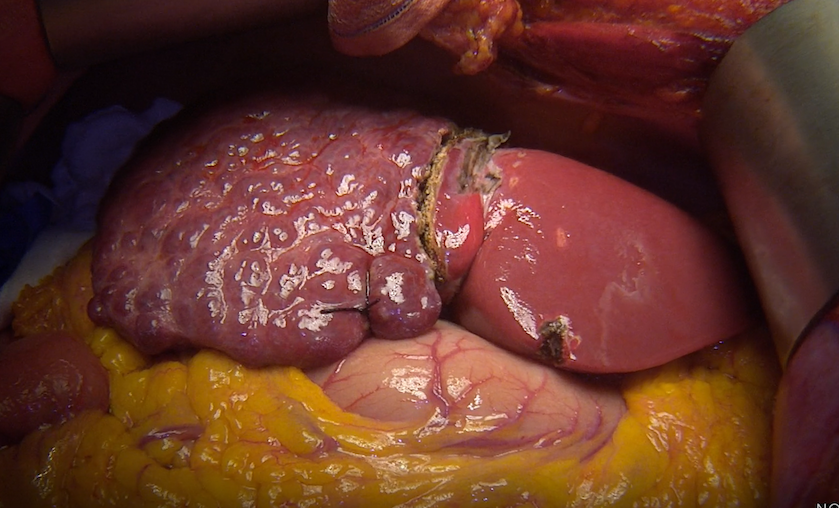Left lateral segment liver transplantation in the cirrhotic setting with hepatocellular carcinoma: A case report
Dong Zhao1, Lei Xia1, Wei Geng1, Jinkai Liu1, Hanyong Sun1, Jiang Zhang1, Yi Ding1, Qiang XIa1, Jianjun Zhang1.
1Liver Surgery, Renji Hospital, School of Medicine, Shanghai Jiao Tong University, Shanghai, People's Republic of China
Introduction: The unremitting shortage of donor organs has sparked creativity in attempting to bridge the gap between supply and demand.
Method: In this study, we present a potential expansion of organ availability by performing an LLS liver transplant followed by transplantation with the RAPID technique in the setting of liver cirrhosis. A 60-year-old man was diagnosed with HCC complicated by cirrhosis and severe portal hypertension. In the 1st stage, the recipient’s left lobe was resected and then partial liver transplantation using his 35-year-old daughter’s LLS graft with a graft-to-recipient weight ratio of 0.39% was attempted. The recipient developed SFSS during the early postoperative hospital course which was corrected by terlipressin and PV modulation while the graft regenerated rapidly. The remnant right liver was removed on POD23 with ultimate PVF and PVP 45 cm/s and 16 mmHg, respectively. The recipient was discharged after 19 days of the second operation.
Results: Currently, the patient is doing well 1 year after LTx, with a normal AFP level and no evidence of tumor recurrence on the latest PET-MRI scan. The living donor was discharged 5 days after the operation and recovered well with no complications.
Conclusion: Our study suggests that two-stage liver transplantation in the setting of portal hypertension is feasible in experienced medical centers. Successful application of small left livers in end-stage liver cirrhosis may significantly increase the donor pool for adult patients.

[1] left lateral segment liver transplantation
[2] two-stage liver transplantation
[3] hepatocellular carcinoma
[4] portal hypertension
[5] cirrhosis
